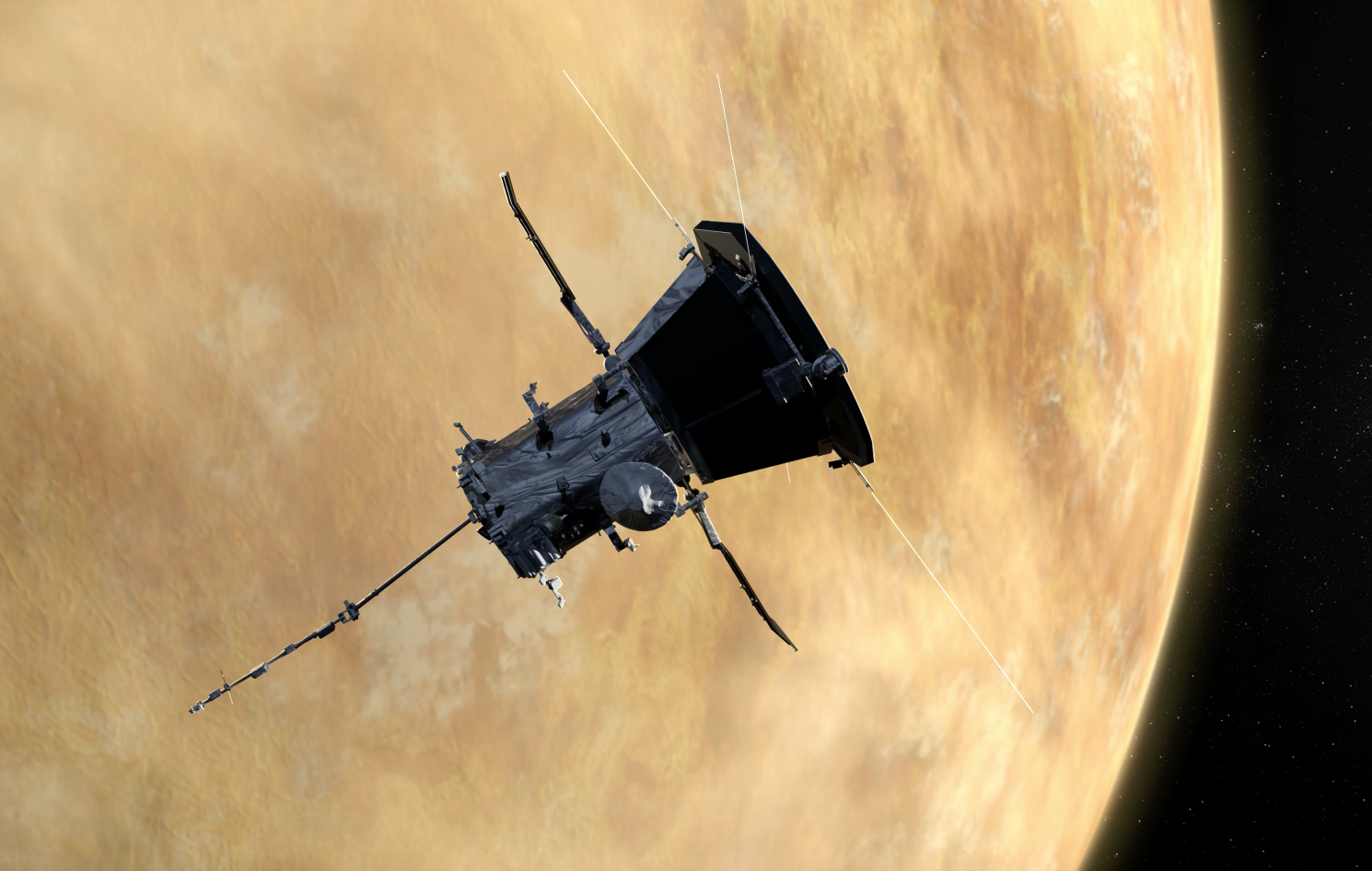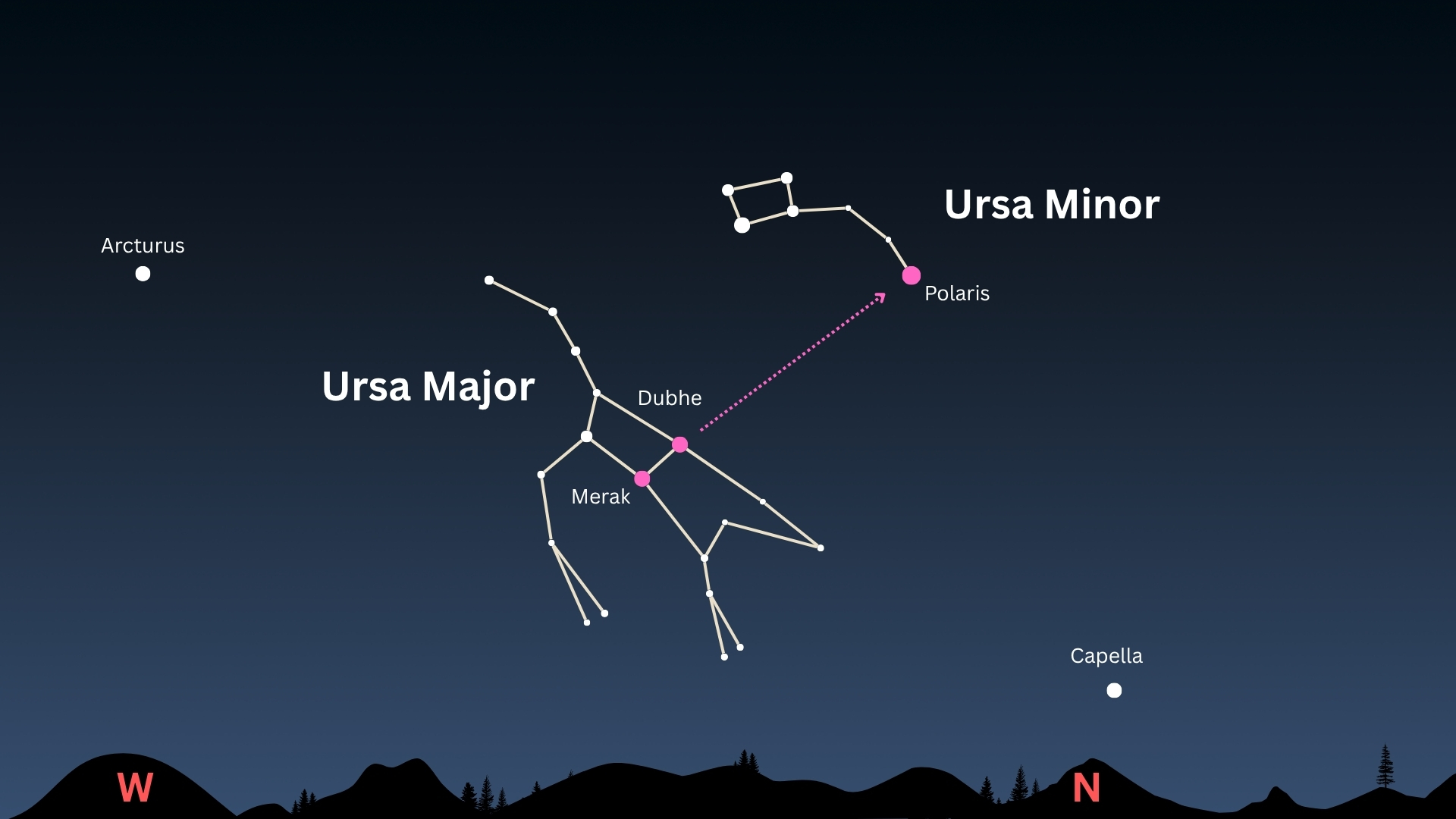NASA's Parker Solar Probe swings through Venus 'tail' in flyby today

A daring sun-grazing NASA spacecraft turns its focus to Venus today (July 10) with a critical flyby that will pass through the planet's weird "tail."
The Parker Solar Probe, which NASA launched in August 2018, is designed to swoop through the sun's super-hot outer atmosphere and help scientists understand the way our star shapes the solar system. But in order to complete its seven-year mission, the spacecraft needs to adjust its speed by swinging past Venus a total of seven times. It'll do so for the third time tonight at 11:22 p.m. EDT (0322 GMT on July 11).
When Venus scientists first heard about the Parker Solar Probe's Venus flybys, they started scheming. Eventually, they confirmed that Parker Solar Probe's instruments could capture scientifically interesting observations of our neighboring world, and they convinced the spacecraft's team to turn those instruments on for the flybys.
Related: Hello, Venus! Parker Solar Probe makes second planetary flyby.
Now the moment has come for the third of those encounters. This time around, Parker Solar Probe's closest approach to Venus will bring it about 517 miles (832 kilometers) above the planet's surface. For comparison, that's about twice the altitude of the International Space Station above Earth.
Venus scientists are particularly excited about this flyby because it will carry Parker Solar Probe through what they call the "tail" of Venus. The structure is formed by gas particles in the planet's atmosphere becoming charged ions, at which point they can escape Venus' gravity and sneak away into space
Planetary atmospheres are a key characteristic making worlds look so different. Earth's nitrogen-rich atmosphere keeps the planet's surface temperate and wet. Venus' thick carbon dioxide blanket traps heat on the hellish world, the picture of a greenhouse world gone amok. And Mars used to have a plush atmosphere and a wet surface, then lost each in turn.
Breaking space news, the latest updates on rocket launches, skywatching events and more!
Scientists hope that Parker Solar Probe's measurements will help them better understand atmospheric loss in general, not just today at Venus. Conveniently enough, Venus, unlike Mars, loses its atmosphere in a way that's easily observed by the same plasma instruments that solar scientists needed to understand what's happening at our star.
Two other spacecraft have carried such instruments to Venus: NASA's Pioneer Venus Orbiter from 1978 to 1992, and the European Space Agency's Venus Express from 2006 to 2015.
But the technology of spacebound plasma science instruments has improved dramatically since those missions were built, Shannon Curry, a planetary physicist at the University of California, Berkeley, told Space.com before Parker Solar Probe's previous Venus flyby, in December 2019. Some of those instruments gathered data only once every eight minutes, she said; Parker's do so every eight seconds.
Not only does Parker Solar Probe carry newer instruments, its data hauls have been phenomenally large. Mission personnel have repeatedly increased download rates and lengthened science observations because of the success, with the spacecraft most recently gathering nearly two months' worth of data during its last solar flyby.
The spacecraft will make its next close approach to the sun in September, when it will break its own records for close solar approaches and for speed. The vehicle will next swing past Venus in February 2021.
The $1.5 billion Parker Solar Probe is named after famed solar scientist Eugene Parker, who hypothesized that something like the solar wind must exist. That phenomenon, a stream of plasma flowing off the sun and across the solar system, is a key science target of the spacecraft, which Parker himself watched launch in 2018.
Email Meghan Bartels at mbartels@space.com or follow her on Twitter @meghanbartels. Follow us on Twitter @Spacedotcom and on Facebook.
Join our Space Forums to keep talking space on the latest missions, night sky and more! And if you have a news tip, correction or comment, let us know at: community@space.com.

Meghan is a senior writer at Space.com and has more than five years' experience as a science journalist based in New York City. She joined Space.com in July 2018, with previous writing published in outlets including Newsweek and Audubon. Meghan earned an MA in science journalism from New York University and a BA in classics from Georgetown University, and in her free time she enjoys reading and visiting museums. Follow her on Twitter at @meghanbartels.
